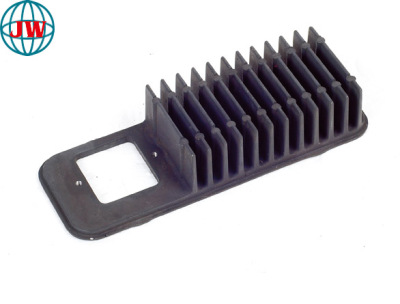
The Vital Role of Die-Cast Furniture Connectors: Revolutionizing Assembly and Design
2025-05-21 15:30
In the dynamic world of furniture manufacturing, die castinghas emerged as a transformative force, particularly in the production of furniture connection components. These unassuming yet essential parts—ranging from hinges and brackets to screws and joints—form the backbone of modern furniture, enabling seamless assembly, enhanced durability, and innovative designs. This article explores how die-cast furniture connectors are reshaping the industry, driving advancements in functionality, sustainability, and mass production.
The Precision and Versatility of Die-Cast Connectors
Die castingis a manufacturing process that involves injecting molten aluminum, zinc, or magnesium alloys into precisely engineered molds under high pressure. This method offers unparalleled precision, allowing manufacturers to create complex geometries with tight tolerances—a crucial advantage for furniture connectors that require exact fit and reliable performance.
Key Materials in Furniture Die Casting
Aluminum Alloys: Lightweight yet robust, aluminum die castings are ideal for load-bearing connectors like chair legs joints and table frames. Their corrosion resistance makes them suitable for both indoor and outdoor furniture, ensuring longevity even in humid or corrosive environments.
Zinc Alloys: Renowned for their ability to capture fine details and achieve smooth finishes, zinc is commonly used in decorative connectors, such as ornate drawer handles, cabinet hinges, and decorative brackets. Zinc die castings combine aesthetic appeal with durability, making them popular in high-end furniture designs.
Magnesium Alloys: Although less prevalent, magnesium’s ultra-lightweight properties and high strength-to-weight ratio make it valuable for portable or collapsible furniture, where minimizing weight without sacrificing structural integrity is essential.
Enhancing Functionality and Assembly Efficiency
Furniture connectors are the unsung heroes that determine how easily a piece can be assembled, disassembled, and transported. Die-cast components offer several functional advantages:
Quick and Secure Assembly: Precision-engineered die-cast joints, such as interlocking brackets and snap-fit connectors, eliminate the need for complex tools or extensive expertise. For example, modular furniture systems use die-cast connectors to enable consumers to assemble pieces within minutes, reducing labor costs and improving user experience.
Load-Bearing Capacity: In commercial and industrial furniture, die-cast connectors are designed to withstand heavy loads. Aluminum die-cast table legs or bed frames, for instance, can support substantial weight while maintaining stability, ensuring safety and longevity.
Adjustability and Flexibility: Many modern furniture designs require adjustable components, such as height-adjustable desks or extendable tables. Die-cast connectors with threaded holes or sliding mechanisms allow for easy modification, catering to diverse user needs.
Design Innovation Enabled by Die Casting
Beyond functionality, die casting empowers furniture designers to push creative boundaries. The process’s ability to produce intricate shapes and textures unlocks unique aesthetic possibilities:
Sleek and Minimalist Forms: Die casting enables the creation of smooth, seamless connectors that blend seamlessly with furniture surfaces. This is particularly evident in contemporary designs, where hidden or flush-mounted die-cast joints contribute to a clean, minimalist look.
Ornate and Artistic Details: In traditional or artisanal furniture, zinc die-cast connectors can replicate elaborate patterns, from filigree motifs on cabinet hardware to vintage-inspired hinges. These details add character and craftsmanship, elevating the overall design.
Customization at Scale: With die casting, manufacturers can produce customized connectors in large quantities. This allows furniture brands to offer personalized designs—such as branded logos on handles or unique joint shapes—without sacrificing production efficiency.
Sustainability in Furniture Die Casting
As environmental concerns grow, the furniture industry is increasingly prioritizing sustainable practices. Die casting aligns with these goals through:
Recyclability: Aluminum and zinc are highly recyclable materials. Scrap metal generated during die casting can be melted down and reused, reducing the demand for virgin materials and minimizing waste.
Energy Efficiency: Modern die casting machines, equipped with Industry 4.0 technologies like IoT sensors and AI-driven optimization, consume less energy and produce fewer emissions compared to traditional manufacturing methods.
Longevity: Die-cast connectors are engineered for durability, reducing the need for frequent replacements. This extends the lifespan of furniture pieces, contributing to a circular economy by minimizing landfill waste.
Applications Across Furniture Sectors
Residential Furniture
In homes, die-cast connectors enhance both practicality and style. Aluminum die-cast drawer slides offer smooth operation, while zinc die-cast cabinet knobs add elegance. For flat-pack furniture, precision connectors ensure easy DIY assembly, making it accessible for consumers worldwide.
Commercial and Office Furniture
Modular Office Systems: Die-cast connectors enable the creation of flexible office furniture, such as adjustable desks, cubicles, and shelving units. Their strength and adaptability support dynamic workspaces that can be reconfigured as needed.
Hospitality and Retail: High-end hotels and stores use die-cast decorative connectors to create unique furniture pieces that reflect brand identity. Ornate zinc die-cast bed frames or aluminum die-cast display stands combine functionality with visual appeal.
Outdoor Furniture
For outdoor use, die-cast aluminum connectors are a top choice due to their corrosion resistance. Patio chairs, tables, and loungers with die-cast joints can withstand harsh weather conditions, ensuring long-term usability without rust or degradation.
Challenges and Innovations in Furniture Die Casting
Despite its advantages, the industry faces challenges, including fluctuating material costs, the need for faster production cycles, and evolving consumer preferences. To address these, manufacturers are innovating:
Advanced Mold Design: 3D printing and computer-aided design (CAD) technologies streamline mold development, reducing lead times and enabling rapid prototyping of new connector designs.
Smart Manufacturing: IoT sensors embedded in die casting machines monitor real-time data on temperature, pressure, and production speed, optimizing processes and predicting maintenance needs.
Hybrid Materials: Researchers are exploring composite alloys that combine the strengths of multiple metals, aiming to create lighter, stronger, and more cost-effective connectors.
The Future of Furniture Die Casting
As the furniture industry continues to evolve towards smart, sustainable, and customizable solutions, die casting will remain integral. Trends like modular furniture, which emphasizes easy assembly and disassembly, and biophilic design, which incorporates natural elements, rely on die-cast connectors for structural integrity and aesthetic integration. With ongoing advancements in materials science and manufacturing technology, die casting is poised to illuminate the future of furniture—one precision-crafted connection at a time.
In conclusion, die-cast furniture connectors may be small in size, but their impact on the industry is monumental. By combining functionality, durability, and design versatility, they serve as the invisible links that hold together the world’s most innovative furniture pieces, shaping how we live, work, and interact with our spaces.
Get the latest price? We'll respond as soon as possible(within 12 hours)












